Getting a cheap pair of in-ear monitors can have a huge impact on your band’s live performance. Provides clear monitoring and isolates musicians from noisy stages.
Additionally, some musicians who are already familiar with IEMs prefer them over headphones in the studio, citing comfort as the main reason.
Here are the 9 Best Cheap In Ear Monitors of 2025
1. Shure SE215 Pro (Best budget IEM)
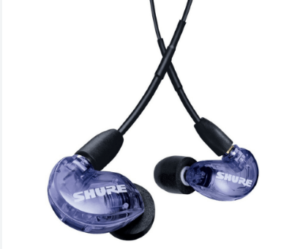
As one of the companies’ budget pro audio, you can expect Shure to produce IEMs of exceptional quality. The Shure SE215 proves this with excellent sound reproduction and excellent ambient noise reduction.
Shure’s SE215 IEM earphones are known for their high quality and affordable price. It features well-designed HD drivers that deliver clear, bassy sound.
The earphones come with a variety of tips to ensure a comfortable and secure fit and, when worn correctly, provide an incredible 37dB of noise reduction.
The cable is reinforced with Kevlar for durability, but can also be removed and replaced if necessary.
We found that while this device might not exactly offer the widest or most impressive tonal range, it still provided a satisfyingly lifelike sound for what was going on on stage. For under $/£100, I’m impressed.
2. Audio Technica ATH-E70
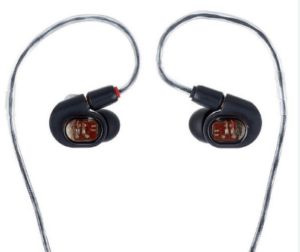
Positioned at the high end of the imposed cheap in-ear monitor limitations, the Audio Technica ATH-E70 offers a tantalizing taste of what happens when you start investing serious cash in monitoring.
Sound reproduction is several notches better than everything else shown today, with everything from sub-bass to sparkling treble sound outstanding.
The foam ends help create enough of a seal to act as stage-friendly noise canceling.
Although they may seem too expensive to expose yourself to the loud sounds of a live show, take good care of these IEMs and they will take good care of you.
3. Ultimate Ears
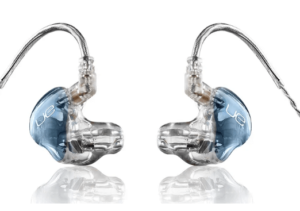
Ultimate Ears’ UE 5 Pro custom in-ear monitors are ideal for professional musicians and audiophiles. Built with dual drivers, it delivers a rich, balanced audio experience with clear highs and deep lows.
The monitors feature a custom-molded fit that ensures comfort and reduces external noise, making them ideal for long studio sessions or live performances.
Ultimate Ears also features a detachable cable system that can be easily replaced or upgraded, extending the life of your investment.
Designed to deliver high-quality audio and a personalized fit, they demonstrate Ultimate Ears’ commitment to professional-grade sound and user-friendliness. Our top picks for the best in-ear monitors.
4. Etymology Research ER3XR
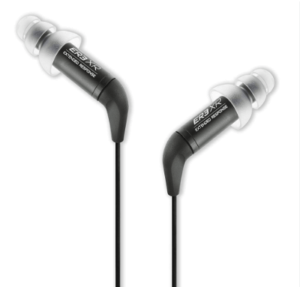
The Etymotic ER3XR series promises to tackle these issues. The ‘ER’ in the name stands for extended response, meaning wider bass reproduction.
This serves an obvious purpose when listening to music or other general sources, but it also means you’re not just hearing a full-on hornet when playing at higher volumes.
Of course, its passive nature also has the advantage of not requiring any kind of external power source, and we also liked the included accessory kit,
which includes earplugs in a variety of sizes and clips to securely hold the monitor in place. On a shirt.
Although the isolation isn’t as good as some of the other options on this list, I still found using it to be a very enjoyable experience. If you want to hear noises around the stage, this could be a good choice.
5. Simgot EK3
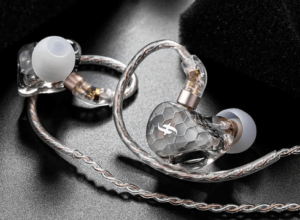
The Simgot EK3 may not be a household name in the professional audio world, but it offers a lot of features for a mid-range price.
The most notable feature is the outer casing, which is made of medical-grade resin and has an ergonomic shape that ensures a comfortable fit for almost everyone.
This is reminiscent of much more expensive, custom-made in-ear monitors.
It also comes with three pairs of silicon tips, has a frequency response of 20~40kHz, and four tuning modes depending on the intended use.
6. Mackie MP-220

The drivers of any set of earphones are arguably the most important component. Since it’s the drivers that transmit sound to your ears, higher is usually better.
In an ideal world, we would find drivers that independently control the bass, midrange, and treble frequencies so that each is reproduced perfectly.
But as a good middleman, the dual-driver Mackie MP-220 provides a great example of how these simple components can increase overall performance levels tremendously.
We found them to be well-built, and overall we couldn’t help but be impressed with the value they offer.
7. Sennheiser IE 40 Pro
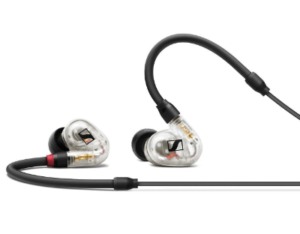
The Sennheiser IE 40 Pro stands out from its competitors with its ultra-small driver design and fits closely to the ears without causing irritation, making it more comfortable even for people with small ears.
Additionally, these in-ear monitors (IEMs) reproduce high-quality sound without distortion, even at loud volumes. The best part is that it comes at a price that anyone can easily afford.
8. Shure SE425 Pro
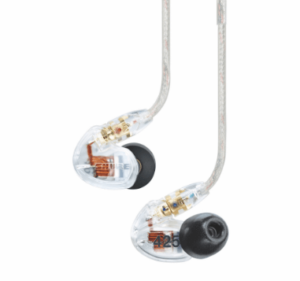
The Shure SE215 Pro shown earlier in the list is a great budget IEM, but the Shure SE425 is covered under warranty simply because of the superior quality it offers.
The SE425 adds additional drivers to improve the reproduction of a wider range of frequencies and blocks up to 37 dB of external noise, making it ideal for use on loud stages.
In fact, the additional drivers make a huge difference by nicely organizing and amplifying the bass and treble frequencies.
The SE425 is undoubtedly a great set of in-ears, but we found that the cables were prone to getting pinched, damaged, or cut after prolonged use.
Shure sells replacement cables, so it’s not the end of the world, but it’s disappointing nonetheless.
If you’re on a budget, the Shure SE425 set would be a great piece of kit.
9. Weston AM Pro X10
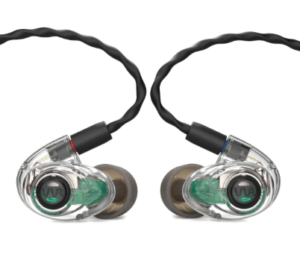
While other budget IEMs on this list block out noise so you can fully focus on sound reproduction, the AM10 allows in a certain amount of ambient noise but filters it out so it doesn’t affect the overall sound.
The advantage here is that you can still hear what’s going on around you, but without degrading the sound you receive at your desk.
This gives you the best of both worlds, with isolation when you need it, but also allows you to hear ambient noise.
We liked the AM10, hand-built in Colorado Springs, for many things, especially its great sound and overall sturdiness.
The earbuds come in a variety of shapes to fit everyone, and they also come with a convenient carrying case to store all the accessories.
What should you look for in a cheap in-ear monitor?
Noise blocking
High-quality eartips seal the ear canal, blocking out ambient noise. Different brands offer different types of eartips, each offering different levels of isolation.
Models with multiple balanced armature drivers or dynamic drivers often block noise better.
Passive noise cancellation technology also contributes to excellent noise isolation. Well-fitting eartips, advanced driver technology and a passive noise-canceling mechanism create an acoustic barrier that blocks out unwanted external noise.
Sound quality
Look for monitors with a wide frequency response range that can handle frequencies from 20Hz to 20kHz, balanced armature drivers for precision and speed, and dynamic drivers for rich bass tones.
Lower impedance values make it easier for the monitor to drive effectively on devices such as smartphones, while higher impedance models provide excellent audio fidelity.
To enjoy music at optimal volume levels without distortion or loss of fidelity, choose a monitor with an appropriate sensitivity level. Comfort and Fit
Look for soft eartips that fit tightly without causing discomfort. Ear tips of various sizes provide a secure fit and prevent sound leakage. Some monitors offer custom options to fit your individual needs.
Durability
High-quality materials such as aluminum or titanium housing, reinforced cables, and well-designed connections ensure longevity and prevent premature wear.
Water resistance or sweat resistance is also important for people who use in-ear monitors during physical activity.
Investing in durable in-ear monitors will save you money in the long run and ensure an uninterrupted audio experience.
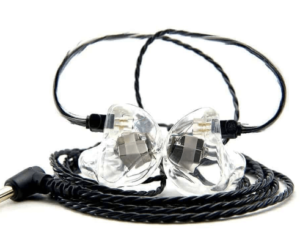
Frequently Asked Questions
How do in-ear monitors work?
It basically serves the purpose of allowing you to receive audio feeds directly from a specific source.
However, they differ from ‘regular’ headphones you might use to watch movies or stream songs in that they are not tuned to enhance sound output. What you hear from a set of in-ear monitors is source audio in its purest form.
This is a small but crucial difference for musicians. For example, a guitarist or bass player needs to be able to hear how their instrument sounds to the audience.
Relying on on-stage monitors can be problematic because the sound competes with other sounds such as amplifiers, drummers, and vocals.
IEMs solve this problem by providing an audio feed directly from the mixing desk and blocking out ambient noise.
Are expensive in-ear monitors worth it?
Expensive in-ear monitors are worth the investment due to their excellent sound quality and advanced features. Delivers improved audio clarity, detailed instrument separation, and balanced frequency response.
Premium materials and meticulous craftsmanship enhance durability and longevity.
The initial cost may be daunting, but its outstanding performance and long-term satisfaction make it a worthwhile investment for audiophiles and music professionals.
Which brands make the best budget in-ear monitors?
Any of the budget IEM brands featured in the guide won’t go wrong. Shure is the top of the tree with a wealth of experience in this world. That’s why the SE215 Pro has held the number-one spot in this guide for so long. They just work.
Additionally, the Etymotic Research ER3XR in this guide proves helpful in research beyond mainstream brands.
It’s designed to create an accurate image of your audio without breaking the bank, and it delivers on its promise perfectly.
How much should you spend on cheap in-ear monitors?
For this guide, we kept the limit for budget in-ear monitors from $50 to $300. This is obviously a significant amount of cash for anyone, but we can point out some improvements you can expect when the price goes up.
Realistically, if you want decent in-ear monitoring, you don’t need to spend more than about $300 on a pair of in-ears.
It’s amazing the kind of features you can get for that amount of money, and when you compare them directly to more expensive in-ears, the difference is nearly impossible to decipher.
In a live performance situation, all you need to hear is what’s happening around you in relatively high fidelity. A pair of budget IEMs under $300 will do just that.
It’s also important to view IEMs as a tool or an investment in your playing career. It may not improve your playing skills, but it does encourage a more professional approach to live performance.
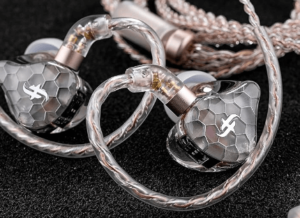
What are the advantages of in-ear monitors?
You can hear exactly what your audience can hear, for better or worse, and you can hear it perfectly.
This also has a chaining bonus meaning you don’t have to play as loudly as you normally would.
For example, a drummer may be much duller and more nuanced in his touch because he is no longer competing with other instruments for hearing.
Singers will also benefit from being able to hear what the audience can hear rather than what they themselves hear in their heads.
How do in-ear monitors compare to headphones?
IEMs are more portable and convenient than traditional headphones. Light and compact, it’s ideal for people on the go. IEMs generally outperform headphones in terms of noise isolation and sound leakage.
High-quality IEMs provide clearer, more detailed sound reproduction. However, personal preference plays a role.
Do in-ear monitors have better sound quality?
Audiophiles and professional musicians often prefer IEMs for critical listening or stage monitoring due to their superior sound quality and noise isolation properties.
The close proximity of the earpiece to the eardrum minimizes sound interference and distortion, allowing direct and controlled sound delivery.
Conclusion
In the end, the ideal cheap in-ear monitor for you is one that fits your budget and meets your specific requirements for sound accuracy, comfort, and isolation to enhance your listening experience.
